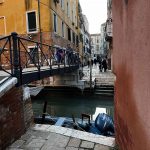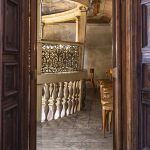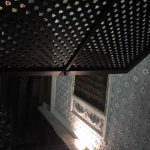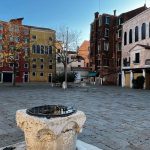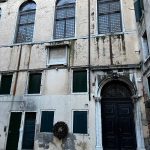I confini dell’alterità
The contours of otherness
The Venice Ghetto will be hosting the official opening of a contemporary art exhibition on the themes of migration and of the encounter with others, at 6.00 pm on 21 April. The richness sparked by interaction with diversity has inspired 10 international artists, who will be showing their work in three different areas of the city’s 16th century ghetto.
To tie in with the 60th International Biennial Art Exhibition for 2024. the famous Venice Biennale dedicated this year to Stranieri ovunque/Foreigners Everywhere, the Jewish Museum of Venice will be hosting an exhibition exploring the migration experience, entitled I confini dell’alterità / The Contours of Otherness.
The exhibition is curated by Marcella Ansaldi, Director of the Jewish Museum of Venice. The exhibition, promoted and organised by the Jewish Community of Venice in conjunction with Opera Laboratori and Shifting Vision, is due to run until 27 October 2024.
The exhibition’s leitmotif has a specific historical link with the whole Cannaregio neighbourhood, where the Ghetto was established in 1516 as a place of confinement for Jews to whom the Venetian Republic never granted the right of citizenship. The cultural experience left behind by a myriad travellers, foreigners and migrants serves today as an example of human coexistence and mutual enrichment from which we can draw inspiration.
Migration, Identity, and Cultural memory are the themes that the artists and works address in this exhibition
The exhibition will be held in three areas of the Ghetto: Spazio Ikona, Spazio Lab and Spazio Azzime.
The artists showing in Spazio Ikona are Jonathan Prince, Amit Berman, Elisheva Reva, Flora Temnouche and Danny Avidan; in Spazio Lab, Lucas and Tyra Morten, Lihi Turjeman, Debra Werblud and Laure Prouvost; and in Spazio Azzime Yael Toren.
The artists showing in Spazio Ikona and Spazio Lab are curated by Jemma Elliott-Israelson, aged twenty-nine, while those showing in Spazio Azzime are curated by Avi Ifergan, with the coordination and assistance of Nadia Gheras.
The exhibition will be accompanied by a catalogue in two languages, published by Sillabe.
The curators of the exhibition, Marcella Ansaldi, Jemma Elliott-Israelson and Avi Ifergan as well as the artists showing their work are available for interview. If you would like to conduct an interview, please get in touch with the Press Office: Andrea Acampa a.acampa@operalaboratori.com, who can also supply high-resolution images of the artworks.
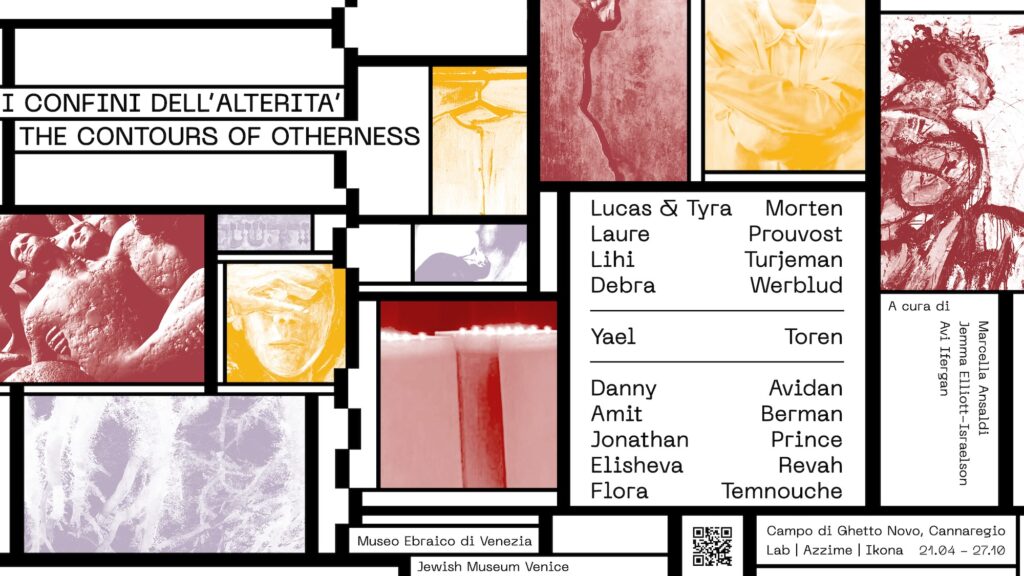
The artists and their works
With Cadmus, the artist uses the mythical figure of Cadmus, founder of Thebes, to explore the theme of migration and of nostalgia for a personally experienced yet now distant place and time.
A transferable safe space is the visual metaphor of the tension between the need to preserve one’s roots and the need to adapt to a new context.
The artists and designers have produced a tribute to Lucas’s grandmother Runa: l, a fragment of cloth made by Runa in her childhood, becomes the dark skeleton of a stool made of objects in molten tin.
Fissure is a huge cube split down the middle by a dark abyss: in this work the artist explores the theme of the impact of migration on identity. A metaphor for the dismemberment of family units, of cultures and of social bonds.
In No More Front Tears the artist addresses the theme of human and animal migrations, promoting a reflection on the importance of transcending identity-based divisions and the concept of national borders, which are totally extraneous to the natural world.
In her performance entitled Challah, the artist recreates the feminine act of weaving bread for Shabbat, an act that renews a sense of identity from one generation to the next.
In Autoportrait the artist captures the essence of prayer in a gesture of introspection and meditation: borne along by experiential and emotional chaos, she comes to a halt in a reflection in constant transformation.
Remains of inscriptions from the synagogues in Florence’s Jewish Ghetto recovered from the archives: in Right-to-left. Top-to-bottom, the artist emphasises the gaps and the cracks in these fragments to reflect on the whole of Jewish history, marked by wandering and by exile.
Yael Toren has four works in the exhibition, including two videos with 3D animation. In these works the artist combines religion and technology, using the latter to raise ethical questions regarding the theme of The Other and of his/her Otherness. Like a religious icon, Pieta forces us to reflect on the concept of morality and on the human condition in the 21st century.
In Silent Transformation III the artist captures the essence of the migration experience through the metaphor of a system of cultural roots: the interweave of lines hollows out the traces and scars of the passage of time and the developments of the collective memory.


























